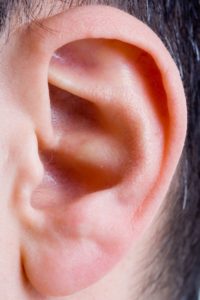If you’ve been following our blog for a while, you’re probably familiar with our thoughts on the Daith piercing for migraine relief. We’ve written numbers blogs on the topic, and we’ve even helped to spread the word on research studies that are attempting to help us better understand the connection between vagus nerve stimulation and migraine relief.
We even connected with Dr. Chris Blatchley, who is leading research over in the United Kingdom in order to learn more about the condition. Recently, his research was published in The London Times, and while the digital article is hidden behind a paywall, you can read the story in the picture below or click here for a larger version.
What’s Next For Daith?
Dr. Blatchley recently reached out and wanted to share some exciting news about what’s in store for Daith piercing research in the near future. They are currently in the process of conducting a 12-month study on 1,000 patients who have underwent the Daith piercing to see how their migraine symptoms are affected over the next year. In 2023, they plan to use brain scans to better understand the immediate effects of the Medical Daith on brain activity.
What we like most about the article and the research is that they are really working hard to take the perceived “randomness” out of the equation. It’s not enough to simply get a piercing in the daith and hope that it provides relief. Dr. Blatchley has created the “Medi-Daith” technique, which helps piercers find the right location for the piercing. The plan isn’t to hit the vagus nerve with the piercing, but instead get close enough to stimulate the area. Being very deliberate about the location of the piercing can really help ensure that trial data is more accurate.
As we’ve said on the blog in the past and as we’ll echo now, while there does seem to be a correlation between vagus nerve stimulation and migraine relief, we’re still waiting on that concrete proof that provides a better understanding between the connection. We’ve always recommended the technique as a low-cost option for patients who have exhausted other treatments and failed to find relief. That said, it appears that there is growing optimism that the piercing can be beneficial for migraine sufferers.
We’ll follow the new research closely, and we’d be happy to answer any questions you might have if you’re struggling with migraines. We have written a number of blogs with helpful information, and if you’re considering pursuing a daith piercing, make sure that you connect with a piercer that understands the daith procedure and how to complete the procedure to stimulate the vagus nerve.
For more information, or for help with migraines or a chronic pain issue, reach out to Dr. Cohn and his team today at (952) 738-4580.
 If you’ve
If you’ve  As we mentioned a couple of weeks ago, a colleague of mine decided that he wanted to conduct some research on the daith piercing among individuals who have sought out the piercing for migraine relief.
As we mentioned a couple of weeks ago, a colleague of mine decided that he wanted to conduct some research on the daith piercing among individuals who have sought out the piercing for migraine relief.